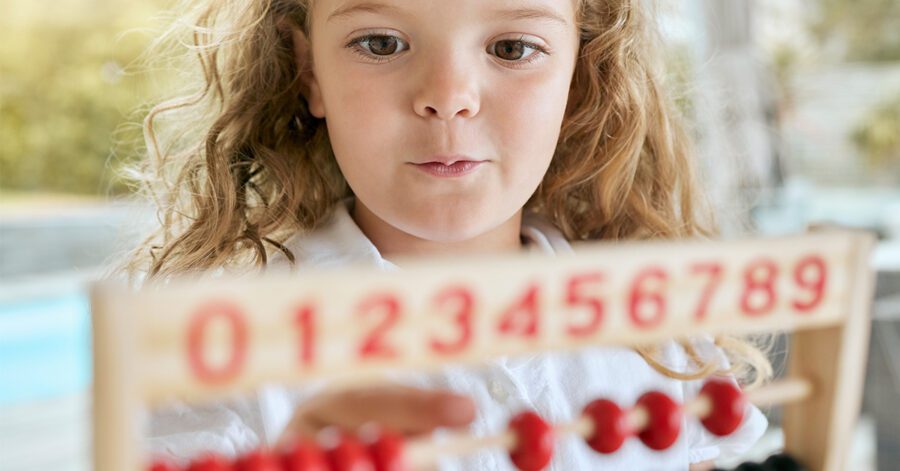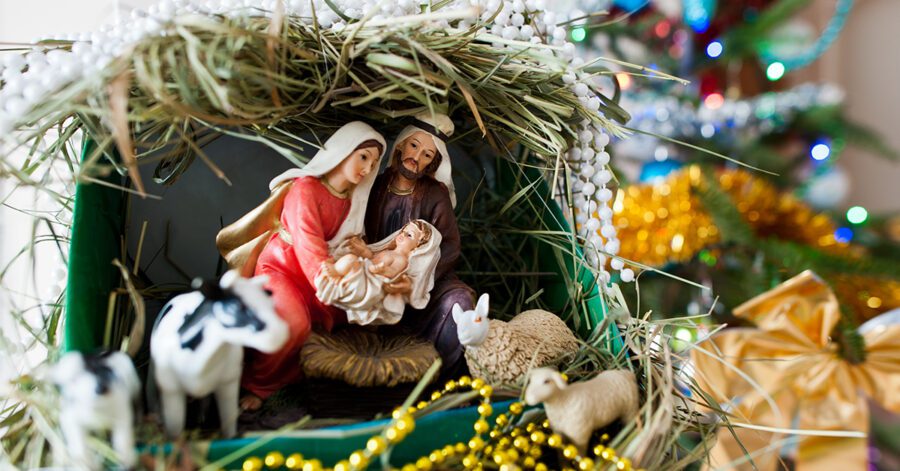Science intimidates many people, but it really shouldn’t. If you’re a homeschool parent searching for simple, hands-on ways of integrating math and science, start with counting. It’s one of the easiest and most effective ways to explore both subjects—especially with preschool and elementary-aged children.
Many parents struggle to find fun, memorable activities that actually teach core concepts. That’s why I’m sharing some of our favorite ideas—backed by research and tested in our own homeschool—to help you turn everyday moments into meaningful learning through observation, measurement, and discovery.
In our home, “Science Saturday” means heading outside to explore nature, ask questions, and start counting. Whether you’re new to homeschooling or want fresh inspiration for your Scribblers or Foundations students, these simple steps will help you integrate math and science with confidence.
The Foundation of Homeschool Math and Science Integration
Before diving into specific activities, it’s important to understand that integrating math and science creates powerful learning opportunities. Research shows that early exposure to integrated math and science experiences lays the groundwork for academic success.
Children who engage in these integrated activities demonstrate improved problem-solving abilities and a deeper understanding of scientific concepts, forming a strong foundation for future homeschool STEM (science, technology, engineering, and mathematics) activities.
Basic Counting: Where Math Meets Science
Let’s look at one of the most fundamental parts of science—counting. Most people do not realize the extent to which science involves simple counting. Some of the most profound experiments in science are based on counting. Mendel’s pea experiments started with counting how many peas had different traits. All statistics begin, first, with a count.
Understanding the Depth of Counting Skills
Counting is more than simple memorization (although that is a key habit in learning!). For young learners, it encompasses several critical concepts:
One-to-One Correspondence
Assign one number to each object in a set.
Example:
Have your child collect ten small rocks from the yard. As they line them up, ask them to touch each rock while saying a number aloud: “One, two, three…” This reinforces the one-to-one relationship between numbers and physical objects.
Science Connection: After counting, classify the rocks by size, texture, or color, introducing observation and categorization, key components of scientific thinking.
Cardinality
Understanding that the last number counted represents the total quantity.
Example:
Count the number of petals on a flower together. Once finished, ask, “How many petals does it have?” Guide your child to understand that the final number is the total number of petals.
Science Connection: Use this method across multiple flowers and compare totals to begin discussions about data collection and variation in nature.
Stable Order
Recognizing that numbers follow a specific, unchanging sequence.
Example:
Create a number line using sidewalk chalk. Let your child hop along the line as they count objects, like leaves or acorns, placing each one next to the correct number.
Science Connection: Track how many of each type of leaf are found during a nature walk and line them up in order, combining counting with pattern recognition and classification.
Abstraction
Counting objects regardless of their nature or arrangement.
Example:
Place a spoon, a pinecone, a block, and a toy car in a pile. Ask your child to count how many objects there are, helping them see that the type of item doesn’t affect the ability to count them.
Science Connection: This skill supports experiments involving mixed materials (e.g., comparing the speed at which different objects roll) while reinforcing that science often measures a mix of variables.
These skills develop number sense, a foundational element highlighted in The Math Map curriculum, and connect directly to age-appropriate science experiments that involve sorting, classifying, or measuring.
What to Count in Your Homeschool STEM Activities
The hardest part of counting is deciding what to count. You can count anything! For life sciences, you can count how many petals are on a flower or how many days it takes for a seed to sprout. Try counting these nature items too:
- The number of blades of grass in a square foot of your yard
- The seeds that sprout from a set of seeds
- The leaves on a plant
- The seeds in a dandelion
- The plant variety within a square foot of forest
There are no rules. You may wind up counting something meaningless, but how will you know unless you count it? Be creative!
Counting as a Scientific Tool
Counting doesn’t just support math—it strengthens key scientific practices, too. In fact, counting serves as a natural bridge between math and science:
- Observation and Data Collection: Count leaves, birds, or bugs during nature walks to develop the core habit of attending and data-gathering skills.
- Classification and Sorting: Organize natural items by number, size, or type, using counting to sort and analyze like a scientist.
- Pattern Recognition: Spot numeric, visual, or musical patterns in nature—how flower petals (and other examples in nature) often follow the Fibonacci sequence, which connects mathematical thinking with scientific exploration.
Advanced Counting: Measurement Activities for Homeschool
Once your child is comfortable with counting, they’re ready to begin measuring—what I like to call “advanced counting.” Measurement is simply counting using a tool like a ruler, thermometer, or stopwatch. You can measure:
- The length of a leaf, plant, or bug
- How long juice takes to freeze
- The time for a shadow to move across the yard
- The temperature at different times of day
- The height of a plant over time
These measurement activities for homeschool not only reinforce math concepts but also introduce students to how scientists quantify the world.
Metric Conversions in Homeschool
As your child gains experience with measuring, introduce the metric system alongside customary units. Use rulers marked in centimeters and inches, or have your child convert temperatures from Fahrenheit to Celsius. These activities support metric conversions in homeschool, strengthening their math skills and scientific literacy.
Age-Appropriate Science Experiments That Integrate Counting
Experiments don’t have to be complicated. In fact, some of the most effective homeschool STEM activities are simple and accessible:
- Slice apples and observe how long they take to brown at different temperatures.
- Track how long different seeds take to sprout under varying light conditions.
- Count how many drops of water can fit on a penny before it spills.
- Estimate the number of objects in a container and then count to check.
Many of these hands-on, age-appropriate science experiments are in the 201 Awesome, Magical, Bizarre, and Incredible Experiments used in Foundations. This book helps children ask measurable questions and use counting and observation to explore answers.
Strategies for Integrating Math and Science Through Counting
Effective strategies to deepen the integration of math and science in your homeschool include:
- Play-Based Learning: Use toys, nature, or kitchen activities to create spontaneous counting opportunities.
- Hands-On Experiments: Let children physically manipulate materials like meter sticks, Legos, or a tasty Hershey’s chocolate bar—they remember better when actively engaged.
- Using Natural Materials: Cut, stack, or sort sticks or rocks. Count tree rings to estimate age. These activities naturally merge science and math.
- Estimation Activities: Have children make a guess (a prediction) about the number of M&Ms in a bag or pumpkin seeds in a pumpkin, then test it by counting and recording the results. This ties directly into scientific inquiry.
Recording Counts: The Scientific Method in Action
The final step of counting is recording what you’ve counted. Science relies on repeated, consistent observations. Encourage your children to record their data—whether it’s how long it took juice to freeze, or how many insects were found in a square yard of grass.
Create a Math and Science Journal
A dedicated math and science journal helps students organize their thinking and document results. Use it to draw conclusions, record questions, and make connections over time. It also prepares your student for lab reports in Challenge I-IV.
Building Strong Foundations in Math and Science through Counting
By integrating math and science through counting, measuring, and recording, you’re cultivating the habit of learning that develops foundational skills across both subjects. These simple, effective activities will make your homeschool feel more cohesive and help your children become curious, confident learners.
Whether through homeschool math and science exploration, fun with measurement activities, or hands-on homeschool STEM activities, you’re laying the groundwork for a love of lifelong learning.
Find out more ways to integrate math and science here:
- Baby Steps to Science: Drawing
- Baby Steps to Science: Collecting Observations
- Navigating The Math Map
Check out this fun temperature science experiment that connects math and science:




